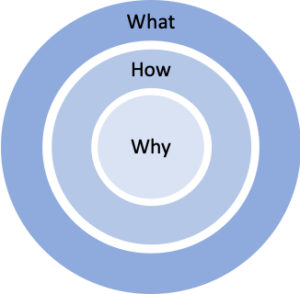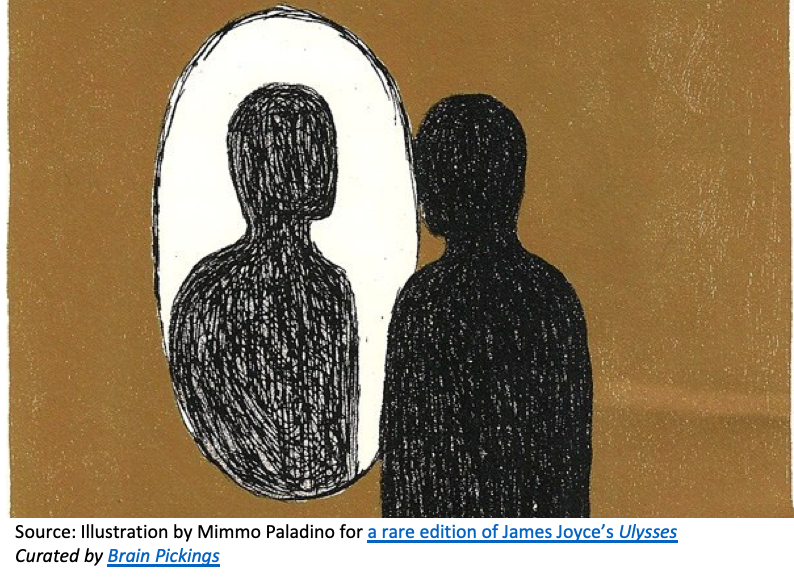Conventional wisdom says that for an organization to survive it needs relentless focus on one strategic goal. In this current pandemic, most companies are doing things that represent a radical departure from what they normally do. Some are not only surviving, they’re thriving. What makes it work?
Massimo Bottura is an award winning chef from Modena, Italy, with several restaurants around the world, numerous Michelin stars, several books, and a non-profit focusing on community equality and food waste reduction. Since the beginning of the pandemic in Italy, he has been quarantined in his home with his family, just like everyone else. His daughter Alexa started making videos of him cooking for the family in the kitchen at home and posting them on an InstagramTV channel she named Kitchen Quarantine. It’s targeted to home cooks, focusing on how to make simple meals at home, and to shop and cook without food waste. The focus on home cooks is a radical departure from a Michelin experience. And it has become wildly popular. The channel has over one million followers.
Another example is the YMCA in the US. In contrast to Bottura’s business, this nonprofit is over 100 years old. It is the birthplace of basketball (true!), and has a long history of offering affordable fitness memberships, swimming lessons, and other community activities. Toward that end, they have offered increasingly sophisticated education, personal growth, and community development programs. When the pandemic struck, they immediately put those programs on hold, and went into action providing child care, delivering meals, and offering safe, socially distanced shelter, and other services. The operational agility required to make this happen so quickly is rarely found in organizations as large as the YMCA. Yet it also works for them.
These organizations provide excellent examples of resilience during the global pandemic. Rather than following conventional wisdom and finding new ways to deliver their current value, they’ve managed to deliver new value. The new value they are delivering appears to oppose many aspects of their current value, but it works because it is consistent with Who they are.
In his book Start with Why and his popular Ted Talk, Simon Sinek proposes that every company knows What it does; it’s products, services, or other units of value. He then says that good companies also have a clear understanding of How they do it; their internal processes, skills, technologies, etc required to produce the units of value. Truly great companies, however, clearly understand Why they exist in the first place. We often describe the Why as the company’s guiding Purpose. Sinek proposes that the company’s Purpose should drive everything the company does, but at the time he felt it was too often ignored.

The Golden Circle – Simon Sinek Start with Why
In the years since Sinek’s ideas were popularized, companies have made great strides in defining their Purpose. Yet we have found that even after stating its Purpose, many companies struggle to keep it in alignment with What they do and How they do it. This is why it’s increasingly necessary to define the boundaries that guide the way a company operates. These boundaries are defined by articulating Who the company is.

Aligning What you do, How you do it, and Why you do it consistently with Who you are as an organization makes it easier to deliver new value

Inconsistent alignment results in chaos when attempting to create new value
Simon Sinek famously says “People don’t buy What you do, or How you do it. They buy Why you do it.” To that I would add that people stick with you as long as they feel as if they know you, like you, and can trust you. Staying true to Who a company is provides the glue that can align many sources of new value to achieve its Purpose and enables consistent adaptation to new business environments.
Bottura’s portfolio of businesses (the What he does) cover a vast range, yet they all illustrate Who he is quite consistently. There is an element of fun, something unexpected, and he always shows great care and respect for the food. In a similar way, Kitchen Quarantine is also fun, offers something unexpected, and demonstrates great care and respect for the food. For example, in one of his videos, Bottura said “listen to the ingredients, and they will tell you what to do.” Similarly, Alexa dedicates some episodes of Kitchen Quarantine to Q&A sessions. The viewers become “ingredients,” to be listened to, and treated with the same care and respect as the food – with a heavy dose of fun and the unexpected.
By approaching Kitchen Quarantine in the same way as other aspects of the business, the Bottura’s are deepening their relationship to their existing customers by sharing the pandemic quarantine experience with them. They also extend this relationship to a new audience who may not go to a Michelin restaurant, but can enjoy a Bottura home experience. Regardless of the venue, the consistency of Who they are adds to their credibility.
The YMCA, on the other hand, has extended its offerings and reinvented itself many times. Given the community orientation at the core of Who the YMCA is as an organization, it’s easy to take for granted that they are offering basic food, shelter, and child care during a community crisis. But we should stop and think about how operationally unique this is. It shows that the organization was built to adapt to the needs of each community in which it resides, with the inner city locations offering different member experiences than those in suburban and rural areas. If it wasn’t built in from the beginning, this type of operational agility would not be able to accommodate such drastic changes so quickly. As with the Bottura’s, this consistency of Who they are enhances their credibility; the new value becomes another aspect of Who they are.
Resilience is defined as the ability to recover from difficulties. This traditionally refers to the ability to bounce back to ‘normal’. Given the exponential rate of change we’re experiencing, regardless of the pandemic, “back to normal’ is no longer a realistic expectation. While the pandemic may appear to be an outlier, it is catalyzing changes that will have ripple effects far into the future. We are clearly heading toward a “new normal”, which is yet to be defined.
Most companies already have a great deal of traditional resilience. The new resilience that enables continuous adaptation to exponential rates of change is what we call Intentional Resilience. Rather than trying to return to the old normal, Intentionally Resilient organizations are able to recover from difficulties by creating a new normal that is consistent with Who they are. Massimo Bottura and the YMCA demonstrate Intentional Resilience. They offer new value with the confidence of knowing it’s an extension of Who they are, rather than a departure from it. The pandemic is providing every company the opportunity to do the same.
In future posts I’ll write more about how we mine the tacit knowledge that defines Who a company is, and to make this knowledge explicit so it can be put to work.


The “back to normal” mentality is so often – almost by definition – counterproductive. Replacing it with a “where can we go from here” attitude leads to an adaptive growth mindset. This is so powerful! I applaud everyone (brands and individuals) who is addressing COVID-19 this way.
“where can we go from here” is a great way to frame it – thanks Drake!